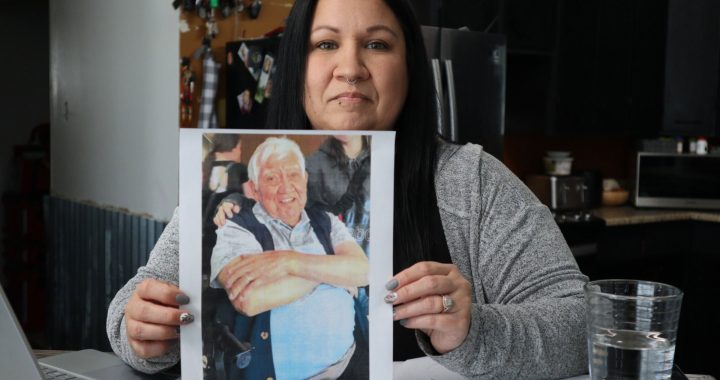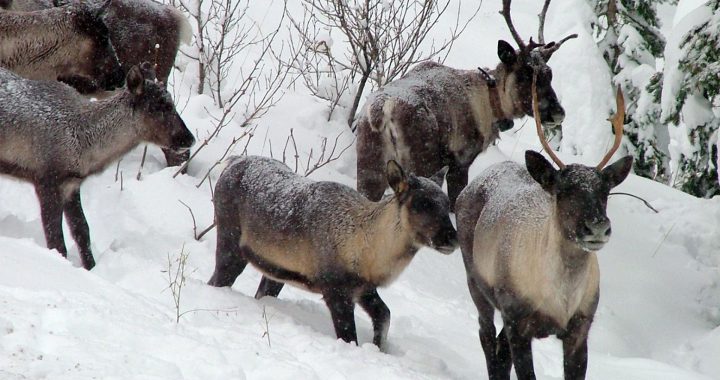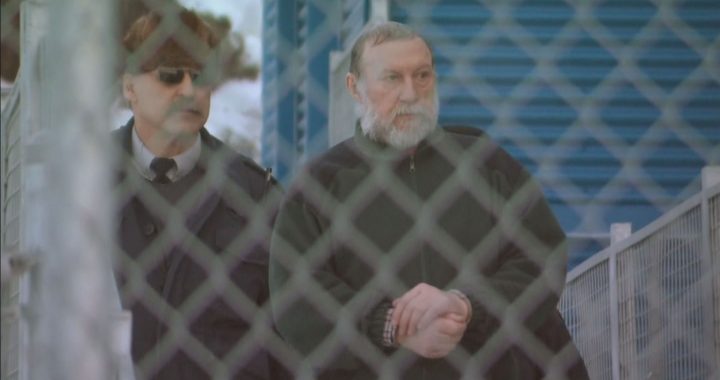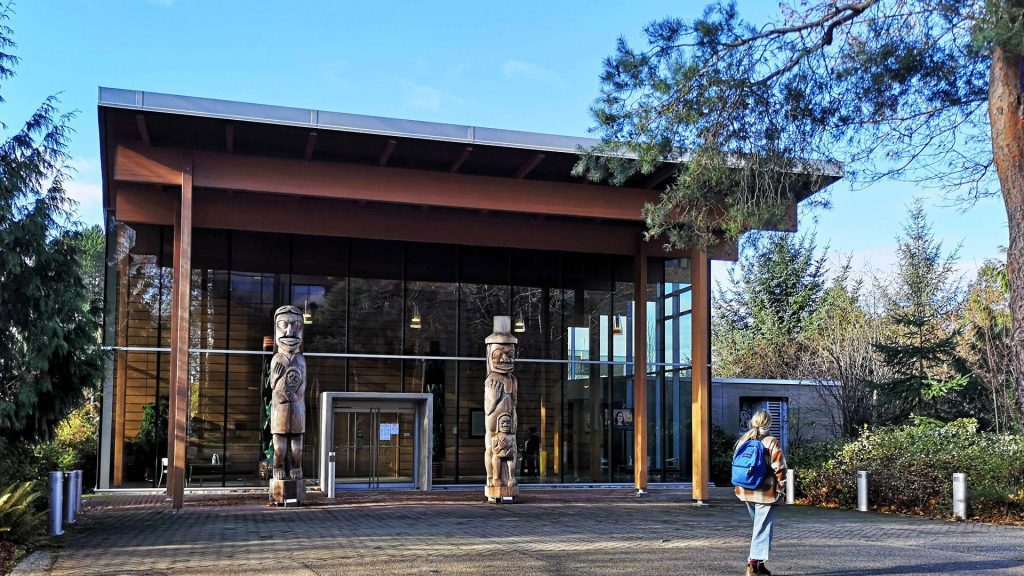
The First Peoples House at UVic is meant as “a home-away-from-home for Indigenous students.” Photo provided by the Indigenous Academic and Community Engagement Office.
Belinda Daniels remembers feeling othered as a high school student in Saskatoon in the ‘90s, and then again as a teacher in the ‘00s.
In both cases, “it was largely a white staff and a white population of students,” says Daniels, who’s a member of Sturgeon Lake First Nation.
“It made me really think about the way the system was structured — how I was always viewed as the other, how I was viewed as the one that needed mentoring, how I was the one that was having deficits … when really I was adhering to my own ways of knowing and ways of being and the way I was raised.
“Nothing was changing … That’s what pushed me to do a master’s degree,” she says. “We need to interrupt the way school is done and integrate more of our communities … because there are other holders of knowledge.”
Today Daniels is teaching future teachers as an assistant professor in the department of Indigenous education at the University of Victoria (UVic). She says she was drawn to UVic because of its focus on revitalizing Indigenous languages.
And according to university leadership, language revitalization is just one way the school is working to decolonize B.C. classrooms.
Language helps to heal
UVic offers Indigenous language revitalization programs at the undergraduate and graduate levels.
The bachelor of education in Indigenous language revitalization was “designed with laddered steps,” so students can go for a full degree or exit after the first year with a certificate or the second year with a diploma.
In 2012, UVic became the first university in B.C. to offer a master’s degree in Indigenous language revitalization, according to the university.
Daniels — who completed an interdisciplinary PhD with a focus on Indigenous language revitalization — says there aren’t enough of these programs in Canada.
“You can specialize in curriculum development, or foundation, or leadership. There’s even land-based education, but there’s no specific tick for Indigenous language revitalization. And that’s what we need. Right across Canada.
“We need more classes and experiences and research and fun put into our Indigenous languages. And we need theory and development to ensure that our languages flourish … This is one of the reasons why I’m at the University of Victoria.
“There is a real need, a real hunger, a real resurgence to reclaim our languages … Indigenous languages are linked to mental well-being … and that would definitely seep into our homes, with our families and with our children, and help heal from past trauma.”
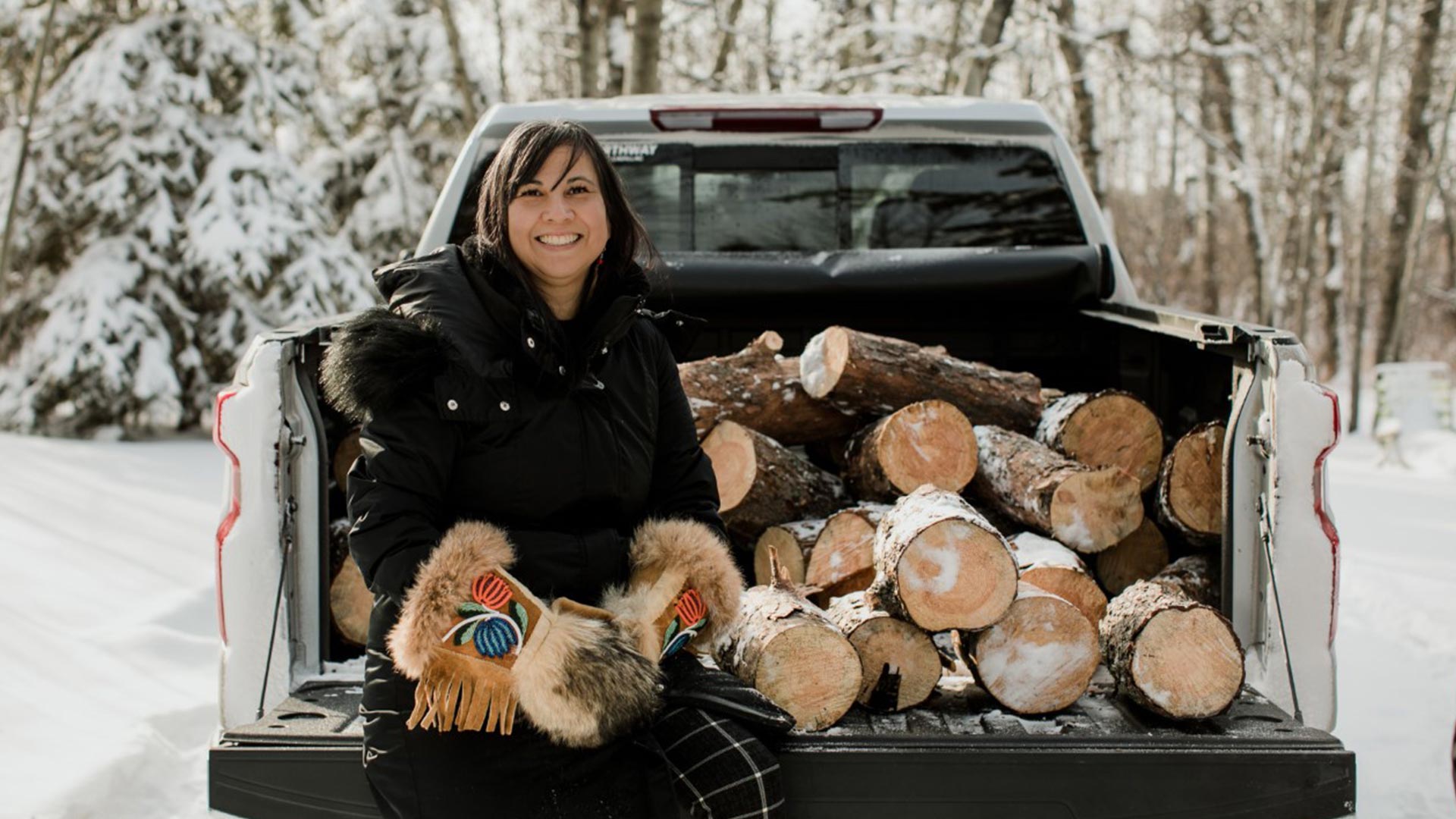
Schools also play a huge role in educating non-Indigenous Canadians about Indigenous Peoples.
In 2016, the National Center for Truth and Reconciliation published a report called “Canadian Public Opinion on Aboriginal Peoples.”
When asked where they learned what they know about Aboriginal peoples and culture, 45 per cent of people polled said “in school or other educational institutions.”
Fore years it was ‘a very white program’ says dean
Ralf St. Clair is the dean of UVic’s faculty of education.
He says “for years” it was “a very white program,” and he recognizes that it’s been difficult for Indigenous students to see themselves in it.
“They didn’t really see graduates who were Indigenous or … instructors who were Indigenous.”
But this is changing, he says.
Rob Hancock agrees. He’s worked with UVic’s office of Indigenous academic and community engagement (IACE) for the past decade, and he’s currently serving as interim co-executive director.
“The numbers have increased steadily,” he says. “We’ve also seen many more Indigenous faculty. There’s over 65 Indigenous faculty here now.”
This year in the faculty of education, 129 out of 1,300 — or roughly 10 per cent — of students self-identified as Indigenous, according to data from St. Clair and Hancock.
That means Indigenous representation in the faculty is roughly on par with the number of Indigenous kids in the province, as they account for about 10 per cent of the total population of kids under 14 in B.C., according to Statistics Canada’s 2016 census.
St. Clair says he’d like to do better.
“There’s also a question of making up for historical underrepresentation in the teaching workforce,” says St. Clair. “It would be amazing if we get to 15 per cent.”
St. Clair says he’s coordinating with leadership across different schools at UVic on a strategy to ensure underrepresented groups such as “female scholars, Indigenous scholars, scholars of colour [and] scholars with disabilities” are prioritized when it comes to hiring faculty and admitting new students.
Right now about six per cent of educators (teachers, administrators, principals and vice-principals) in B.C.’s K-12 education system, self-identify as Indigenous, according to an email from a spokesperson for B.C.’s ministry of education.
“We understand that our provincial education system is a colonial system,” says B.C.’s Minister of Education Jennifer Whiteside.
“Unwinding the colonial nature of the system is something that requires sort of consistent effort and engagement with all of our education partners — with educators, with school and district leadership … [and] with First Nations rights and title holders.
“We need to really focus on developing programs that recruit and retain Indigenous teachers, and that provide the opportunities for people from Indigenous communities to stay in their community.”
Creating safe spaces for Indigenous students
The IACE supports Indigenous students in all faculties at UVic to access tutors, bursaries, and community resources. They also manage the First Peoples House, a “social, cultural and academic centre” for Indigenous students.
It’s important to create a nurturing and holistic environment rooted in Indigenous culture and practices, says Hancock, who is Cree-Metis.
“Our mandate is connected to supporting whole students … providing holistic supports,” he says. “We also offer cultural and social events and programs, opportunities for students to come together around beading or drum-making, or paddle-making.”
That said, he adds that “it doesn’t matter what we’re able to offer in terms of financial assistance or academic programs if there’s still racism and other forms of discrimination on campus.”
When Indigenous students at UVic experience racism or other forms of discrimination, Hancock says the IACE supports them using a trauma-informed model as the students decide “how they would like to address the harms that they’ve experienced.”
“There’s still a lot of work to be done to combat racism and other forms of discrimination both inside the classroom and elsewhere on campus.”
He says IACE staff are part of a committee that’s creating a campus-wide equity policy.
“We cannot rely on the strength of folks who have experienced harm to make change … It’s much more about creating a climate of anti-racism.”
St. Clair says addressing white fragility and racist attitudes amongst older educators is an important part of decolonizing the system.
“There are some folks who are still working with older conceptions of what a respectful relationship looks like,” he says. “It can be very hard for those people to understand the way that microaggressions work.”
He says he gets pushback from “old, white guys” like himself.
“Are you seriously going to tell me that everything I’ve done the last 30 years is wrong? … And the answer to that question is, well, kind of actually. We just have to be okay with that.
“There’s so much work to do.”





